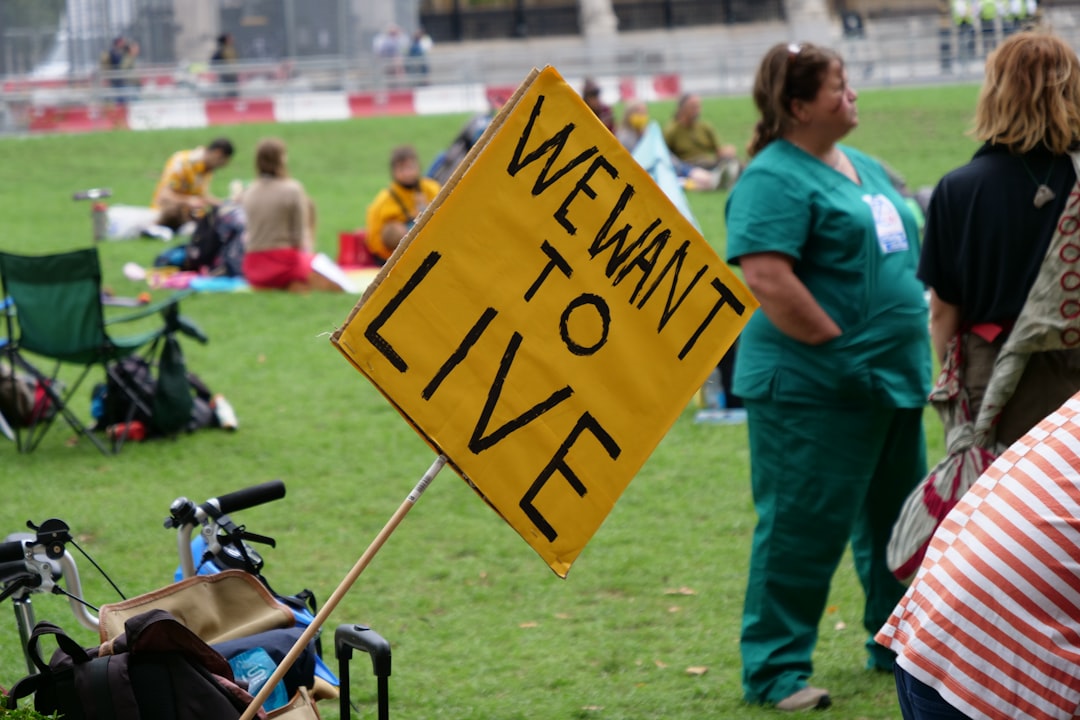Health disparities in the United States represent a significant and persistent challenge that affects various populations across the nation. These disparities are defined as differences in health outcomes and access to healthcare that are closely linked with social, economic, and environmental disadvantages. They often manifest in the form of higher rates of chronic diseases, lower life expectancy, and inadequate access to medical services among marginalized groups.
The existence of these disparities raises critical questions about equity and justice within the healthcare system, prompting a need for comprehensive understanding and action. The roots of health disparities are deeply embedded in the fabric of American society, influenced by factors such as race, ethnicity, socioeconomic status, and geographic location. For instance, minority populations often experience higher rates of conditions like diabetes, hypertension, and heart disease compared to their white counterparts.
Additionally, individuals living in rural areas frequently face unique challenges that exacerbate their health outcomes. Understanding these disparities is essential for developing effective strategies to promote health equity and improve the overall well-being of all Americans.
Key Takeaways
- Health disparities in the U.S. are significant differences in health outcomes and access to healthcare based on factors such as race, ethnicity, socioeconomic status, and geographic location.
- Urban and rural healthcare differ in terms of access, quality, and health outcomes, with rural areas often facing greater challenges due to limited resources and healthcare infrastructure.
- Factors contributing to health disparities include social determinants of health, such as income, education, and access to healthy food, as well as systemic issues like discrimination and lack of healthcare coverage.
- Access to healthcare in urban areas is often hindered by issues such as high costs, lack of insurance, and transportation barriers, while rural areas face challenges related to provider shortages and distance to healthcare facilities.
- Quality of healthcare in urban and rural areas varies, with urban areas generally having more healthcare resources and specialists, while rural areas may struggle with limited services and longer wait times for care.
The healthcare landscape in the United States is characterized by stark contrasts between urban and rural settings. Urban areas typically boast a higher concentration of healthcare facilities, specialists, and advanced medical technologies. This abundance allows for more immediate access to a wide range of services, from routine check-ups to specialized treatments.
However, urban healthcare systems are not without their challenges; issues such as overcrowding, high patient-to-provider ratios, and socioeconomic disparities can complicate access to quality care. Conversely, rural healthcare is often marked by limited resources and fewer healthcare providers. Many rural communities struggle with a shortage of physicians and specialists, which can lead to longer wait times for appointments and reduced access to essential services.
The geographical isolation of these areas further complicates matters, as residents may need to travel significant distances to receive care. This disparity in healthcare availability can have profound implications for the health outcomes of rural populations, highlighting the need for targeted interventions to bridge the gap between urban and rural healthcare systems.
Factors Contributing to Health Disparities
Several interrelated factors contribute to the persistence of health disparities in the United States. Socioeconomic status plays a pivotal role; individuals with lower income levels often face barriers such as inadequate insurance coverage, limited access to nutritious food, and unstable housing conditions. These social determinants of health can significantly impact an individual’s ability to maintain good health and access necessary medical care.
Additionally, systemic issues such as racism and discrimination further exacerbate health disparities. Minority populations frequently encounter biases within the healthcare system that can lead to suboptimal treatment and poorer health outcomes. Cultural differences may also hinder effective communication between patients and providers, resulting in misunderstandings that can affect the quality of care received.
Addressing these multifaceted factors is crucial for creating a more equitable healthcare system that serves all individuals effectively.
Access to Healthcare in Urban and Rural Areas

Access to healthcare is a critical determinant of health outcomes, yet it varies significantly between urban and rural areas. In urban settings, while there may be a greater number of healthcare facilities, access can still be impeded by factors such as transportation issues, high costs of care, and insurance limitations. Many urban residents may find themselves navigating complex healthcare systems that can be overwhelming, particularly for those with limited health literacy.
In contrast, rural residents often face more pronounced barriers to accessing healthcare services. The scarcity of providers means that individuals may have to travel long distances for even basic medical care. This travel can be particularly burdensome for those with chronic conditions or mobility issues.
Furthermore, rural areas may lack essential services such as mental health care or substance abuse treatment, leaving residents without adequate support for their health needs. Addressing these access issues requires innovative solutions tailored to the unique challenges faced by both urban and rural populations.
Quality of Healthcare in Urban and Rural Areas
The quality of healthcare received by patients can vary significantly between urban and rural settings. Urban hospitals often have access to cutting-edge technology and specialized care teams, which can enhance the quality of treatment available. However, this does not guarantee that all patients receive equitable care; disparities in treatment protocols and patient experiences can still exist based on socioeconomic status or racial background.
In rural areas, the quality of care may be compromised due to limited resources and staffing shortages. Rural healthcare facilities may struggle to provide comprehensive services or keep up with the latest medical advancements due to financial constraints. Additionally, the lack of specialists can lead to a reliance on general practitioners who may not have the same level of expertise in certain areas.
This disparity in quality underscores the need for targeted investments in rural healthcare infrastructure to ensure that all individuals receive high-quality care regardless of their geographic location.
Health Outcomes in Urban and Rural Areas
Urban Health Challenges
In urban areas, access to advanced medical care is generally better, but health outcomes can still be negatively impacted by factors such as pollution, high-stress environments, and lifestyle-related diseases. Urban residents may experience higher rates of conditions like asthma or obesity due to environmental factors and lifestyle choices influenced by their surroundings.
Rural Health Disparities
On the other hand, rural populations often face distinct health challenges that contribute to poorer outcomes. Higher rates of chronic diseases such as heart disease and diabetes are prevalent in these communities, often linked to limited access to preventive care and healthy lifestyle options. Additionally, mental health issues may go unaddressed due to stigma or lack of available services.
The Need for Targeted Interventions
The disparities in health outcomes between urban and rural areas highlight the urgent need for targeted interventions that address the specific needs of each population.
Addressing Health Disparities: Solutions and Interventions

To effectively address health disparities in the United States, a multifaceted approach is necessary. Policymakers must prioritize investments in both urban and rural healthcare infrastructure to ensure that all individuals have access to high-quality services. This includes expanding telehealth options, which can help bridge gaps in care for those living in remote areas or facing transportation challenges.
Community-based interventions also play a vital role in addressing health disparities. Programs that focus on education about preventive care, nutrition, and healthy lifestyle choices can empower individuals to take charge of their health. Additionally, fostering partnerships between healthcare providers and community organizations can enhance outreach efforts and ensure that marginalized populations receive the support they need.
By implementing comprehensive strategies that address both systemic issues and individual needs, it is possible to make significant strides toward reducing health disparities across the nation.
Conclusion and Call to Action
In conclusion, health disparities in the United States represent a complex challenge that requires urgent attention from all sectors of society. The differences in access to healthcare, quality of services, and health outcomes between urban and rural populations underscore the need for targeted interventions that address these inequities. By understanding the multifaceted factors contributing to these disparities, stakeholders can work collaboratively to develop effective solutions that promote health equity.
A call to action is essential; individuals, communities, policymakers, and healthcare providers must unite in their efforts to create a more equitable healthcare system. This includes advocating for policies that address social determinants of health, investing in underserved communities, and fostering inclusive practices within healthcare settings. Only through collective action can we hope to eliminate health disparities and ensure that every individual has the opportunity to achieve optimal health regardless of their background or geographic location.
FAQs
What are health disparities?
Health disparities refer to differences in health outcomes and access to healthcare services among different population groups. These differences can be influenced by factors such as race, ethnicity, socioeconomic status, geographic location, and more.
What are urban and rural health disparities?
Urban and rural health disparities refer to the differences in health outcomes and access to healthcare services between people living in urban areas (cities) and those living in rural areas (countryside or small towns). These differences can be attributed to various factors including healthcare infrastructure, socioeconomic conditions, and healthcare provider shortages.
What are some factors contributing to health disparities between urban and rural areas?
Factors contributing to health disparities between urban and rural areas include limited access to healthcare facilities and providers, higher rates of poverty and unemployment in rural areas, transportation barriers, higher prevalence of chronic diseases in rural populations, and limited health education and awareness in rural communities.
How do health disparities impact urban and rural populations?
Health disparities can lead to differences in health outcomes, with rural populations experiencing higher rates of chronic diseases, higher mortality rates, and lower life expectancy compared to urban populations. Additionally, limited access to healthcare services can result in delayed diagnosis and treatment for rural residents.
What are some strategies to address health disparities between urban and rural areas?
Strategies to address health disparities between urban and rural areas include increasing healthcare infrastructure in rural areas, expanding telehealth services, providing financial incentives to healthcare providers to practice in rural areas, improving transportation options for rural residents to access healthcare, and implementing public health initiatives to address specific health issues prevalent in rural communities.













